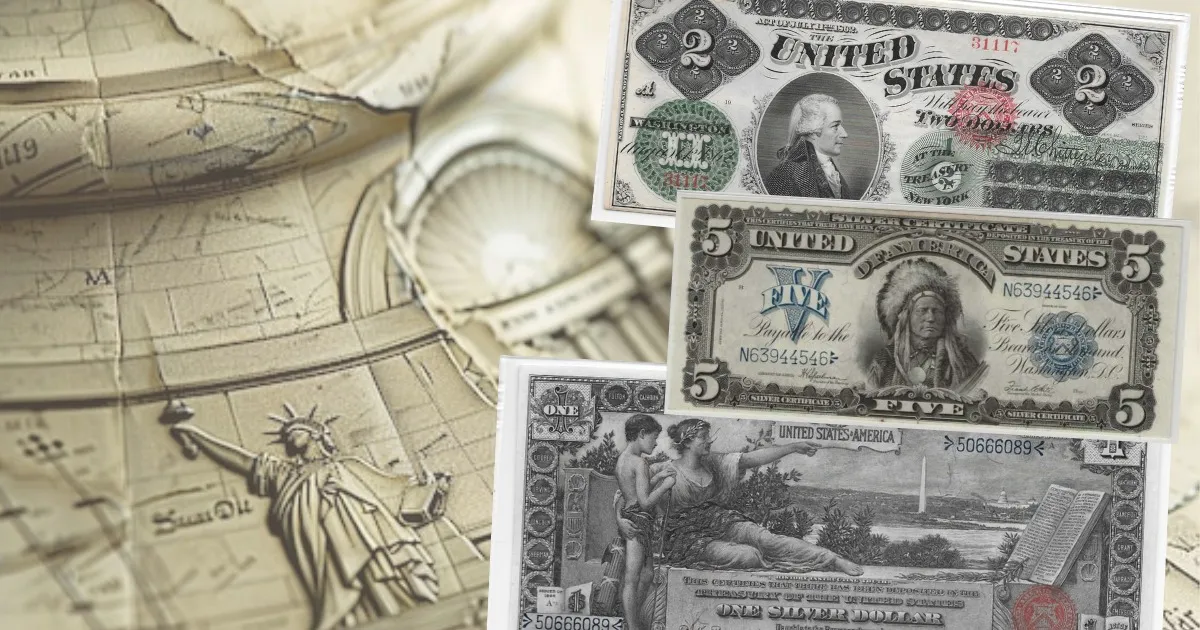Paper Currency was started in the early colonial days. It was printed from the 1730s to 1790s until the U.S. Mint existed. In 1792, after the formation of the U.S. Mint paper currency was replaced by gold, silver, and copper coins. However, paper currency was accepted till the 1820s for transactions in the form of colonial and continental notes.
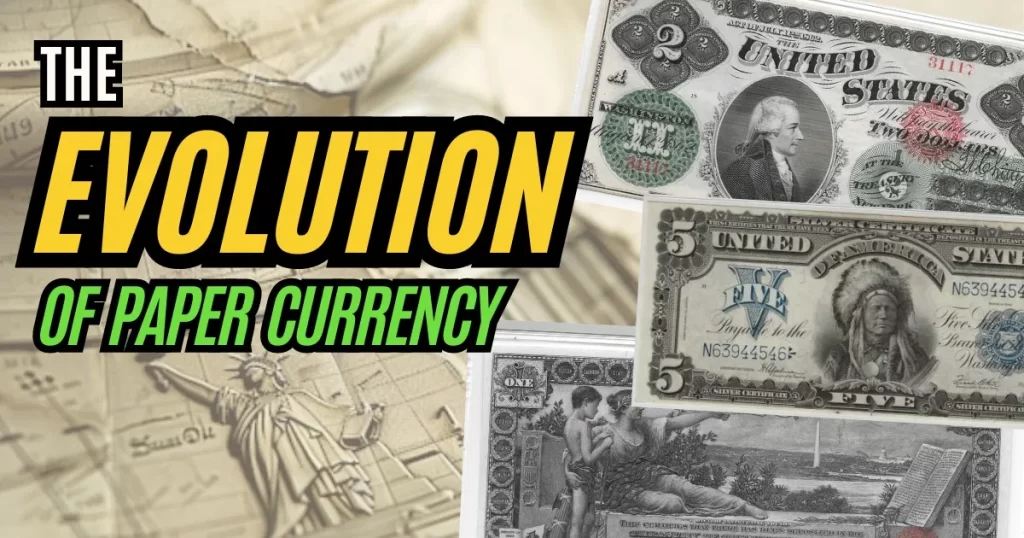
The History of Paper Currency:
Paper currency has always been part of the history of the United States. It officially came into existence when some banks in the U.S. started printing their currency in the 1800s. These banks started exchanging gold and silver with paper money.
This resulted in the bankruptcy of many banks in the end. As a result, these notes were called Broken Bank Notes or Obsolete Currency.
In 1792 the coinage era came into existence producing silver and gold coins. In 1861 when rebellion started and civil war took place the U.S. government began to print paper currency in bulk quantities which formed the U.S. paper currency.
Large Size Notes:
The currency formed during the 1861 Civil War was called the large Size Notes with several Demand Notes. Demand Notes are a type of Large Size Notes that can be paid at any time at the holder’s request. They are also called Demand Drafts. These notes included 5$, 10$, and 20$ notes which are now a high-grade collectible. Visit Our Note collection of the rarest Large Size Notes!
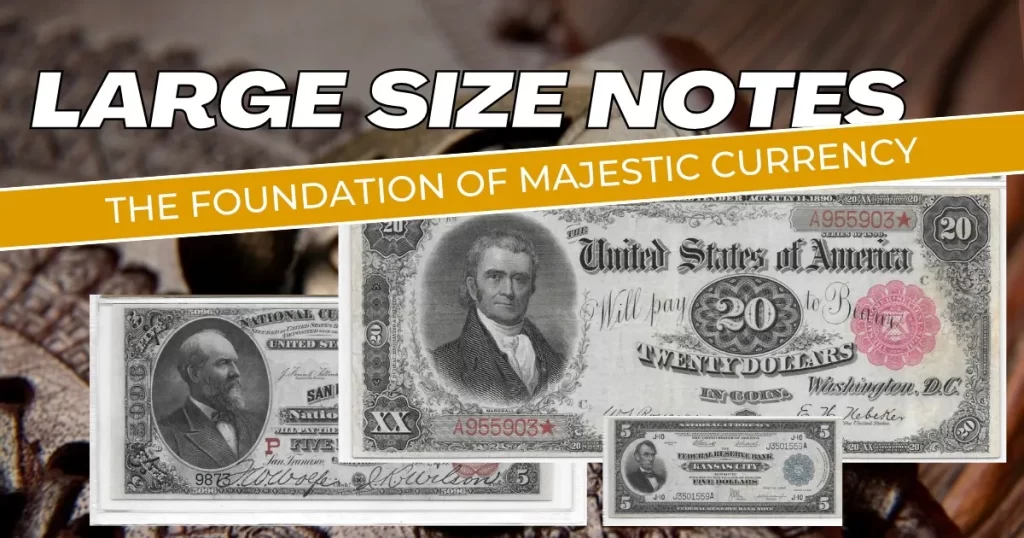
Legal Tenders:
After a year the series of Demand notes was followed by currency Called Legal Tender. These notes were made during the American Civil War. The government started printing them in 1923 and they were called Legal tenders of the United States.
The denominations in this currency were 1$, 2$, 5$, 10$, 20$, 50$, 100$, 500$, 1000$, 5000$ and at last 10,000$. All of the notes above 50$ are now considered most valuable and rare among collectors. These notes can be worth a whole fortune.
Legal Tenders also included notes like Compound Interest Treasury Notes, Interest bearing Notes, and Refunding Certificates. These notes hold the first position in the list of every collector. These notes are very rare and expensive.
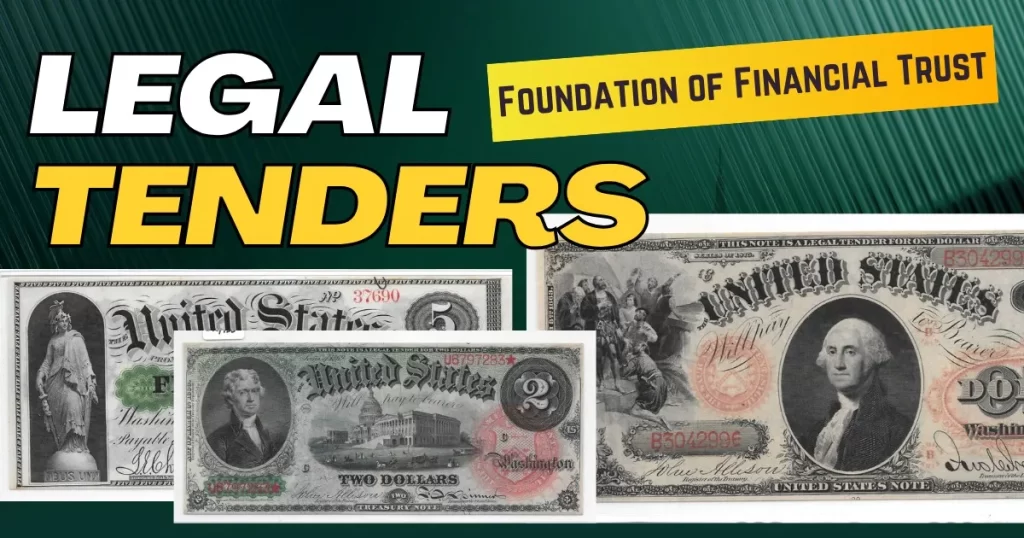
Interest Bearing Notes:
Interest Notes were a type of Legal Tender which bear an interest of 5% per year. These notes were made in the Civil War era to help the U.S. treasury. They were authorized during the act of 3 March 1863.
They were issued in different denominations like 10$, 20$, 50$, 100$, 500$ and 1000$. After some years the interest rate jumped up to 7.3%. Interest Bearing Notes are very famous among collectors. It has a worth of almost 20,000$ with a 6% interest rate. These notes were further subdivided into Compound Treasury Notes and Refunding Notes.
Refunding Certificates:
Refunding Certificates was one of the first kinds of Interest Bearing Notes. These notes were issued by the U.S. treasury in 1879. It was only issued in a 10$ denomination with a picture of Benjamin Franklin. These notes were issued to end the coinage hoard that started during the American Civil War. These notes were formed to make people trust paper currency.
When the government issued these notes silver coins were in large circulation and were common in the banks at that time. The U.S. treasury paid 40,012,750$ to replace coins with these notes.
The Refunding Certificate promised to give a 4% interest rate per year. At last in 1907, congress passed an act to end these notes. Later these notes become a very rare collectible because of their historical significance.
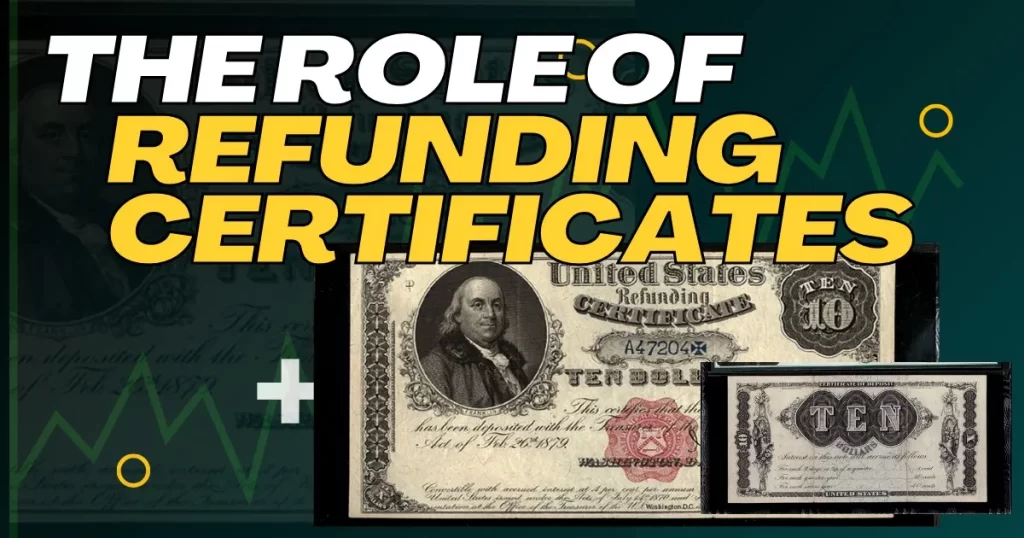
Silver Certificate:
Silver Certificate was the first representative money issued due to resistance to the Fourth Coinage Act which moved the United States to gold standards. It was used between 1878 and 1964 in the United States.
These notes were first issued in denominations from 10$ to 1000$ between 1878 and 1880. In 1886 the U.S. treasury authorized 1$, 2$, and 5$. In 1928 all the banknotes were redesigned and reduced to a smaller size. These notes were only issued in 1$, 5$ and 10$ denominations.

National Currency:
National Currency was the notes official issued by the National Bank of United States. These notes were initially funded by the United States bonds from the United States Treasury. These notes were not considered Legal Tenders but were used in all types of transactions.
The U.S. government retired the National currency as legal currency in the 1930s. Then Federal Reserve Notes, Silver Certificates, and United States notes were used as legal notes.
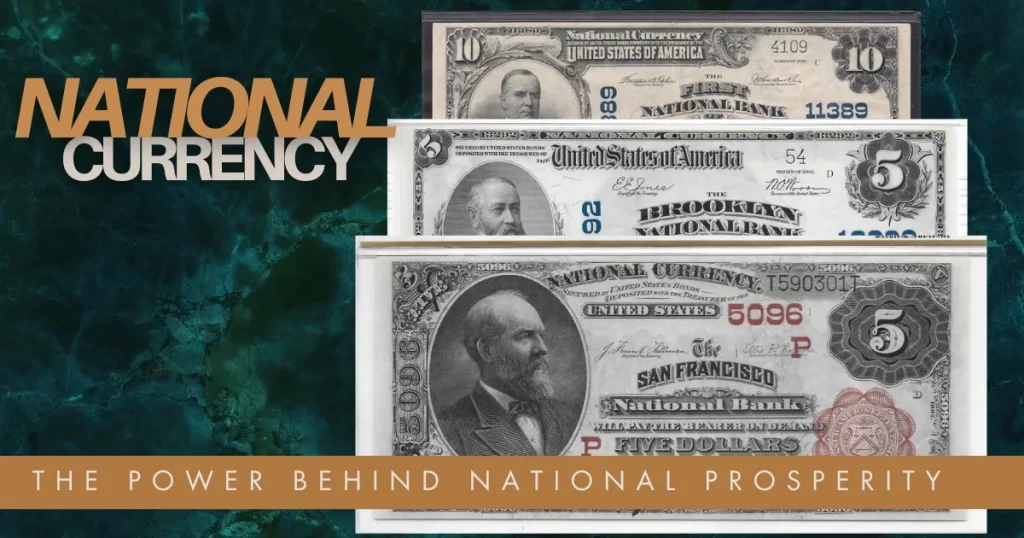
Federal Reserve Note:
Federal Reserve Notes came into existence in response to the Federal Reserve Act of 1913. These notes are the currently issued notes in the United States. These are still issued by the Federal Reserve Bank of the United States.
In the start, due to the centralizing of banks, each bank issued its notes. The First person to issue this currency was Alexander Hamilton in 1791. After him, Andrew Jackson issued a note of its bank in 1836.
Federal Reserve Notes were printed from 1914 to 1928 as large notes and are still printed in the modern day in small format.
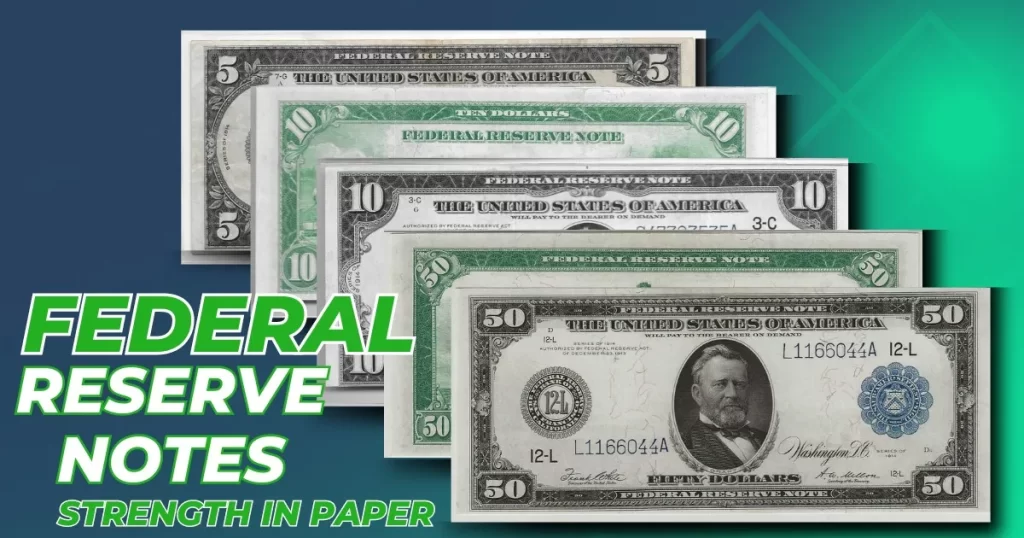
Federal Reserve Bank Notes:
Federal Reserve Bank Notes are Legal Tenders that were issued along with Silver Certificates, United States Notes, Gold Certificates, National Bank Notes, and Federal Reserve notes between 1915 and 1934. They had the same value as every other after the Federal Reserve Act of 1913.
These notes were made in replacement of National Bank Notes. They were issued in the same way as National Bank Notes using United States Bonds. These notes were first issued in 1915 in 5$, 10$, and 20$ denominations. The paper design of the Federal Reserve Bank Note is quite similar to the National Bank Note. Later 1$, 2$ and 50$ denominations were added in 1918 which were temporarily removed by the Pittman Act.
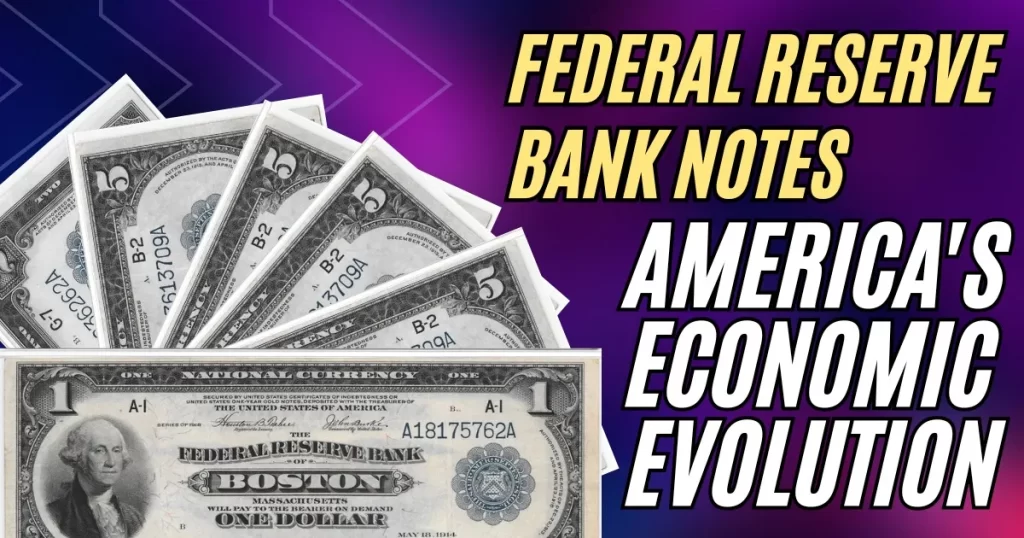
The Large Federal Reserve Note is quite a famous paper note among collectors.
Fractional Currency:
Fractional Currency also known as Shinplasters was introduced by the U.S. government during the Civil War. These notes have a low denomination of 3, 5, 10, 15, 25, and 50 cents. They were issued between 21 August 1862 to 15 February 1876.
Fractional Currency is a rare collectible because of its hand-crafted design. This feature makes it unique and more popular than other paper currency collectibles.
GOLD Certificate:
Gold Certificate was another form of representative money like Silver Certificate. It was issued from 1865 to 1933 by the U.S. Treasury. This certificate made payments easier than gold coins. Gold Certificates were stopped in 1933 and were placed in Federal Bank Reserve. These Notes were first authorized by the Legal Tender Act of 1863. These notes were still not printed till 1865. The first Gold Certificates were issued without a series number.

These Notes are an important figure in the revolution of paper currency in the United States. This historical significance makes them a rare collectible. Visit our Facebook Page to explore our products and community.

